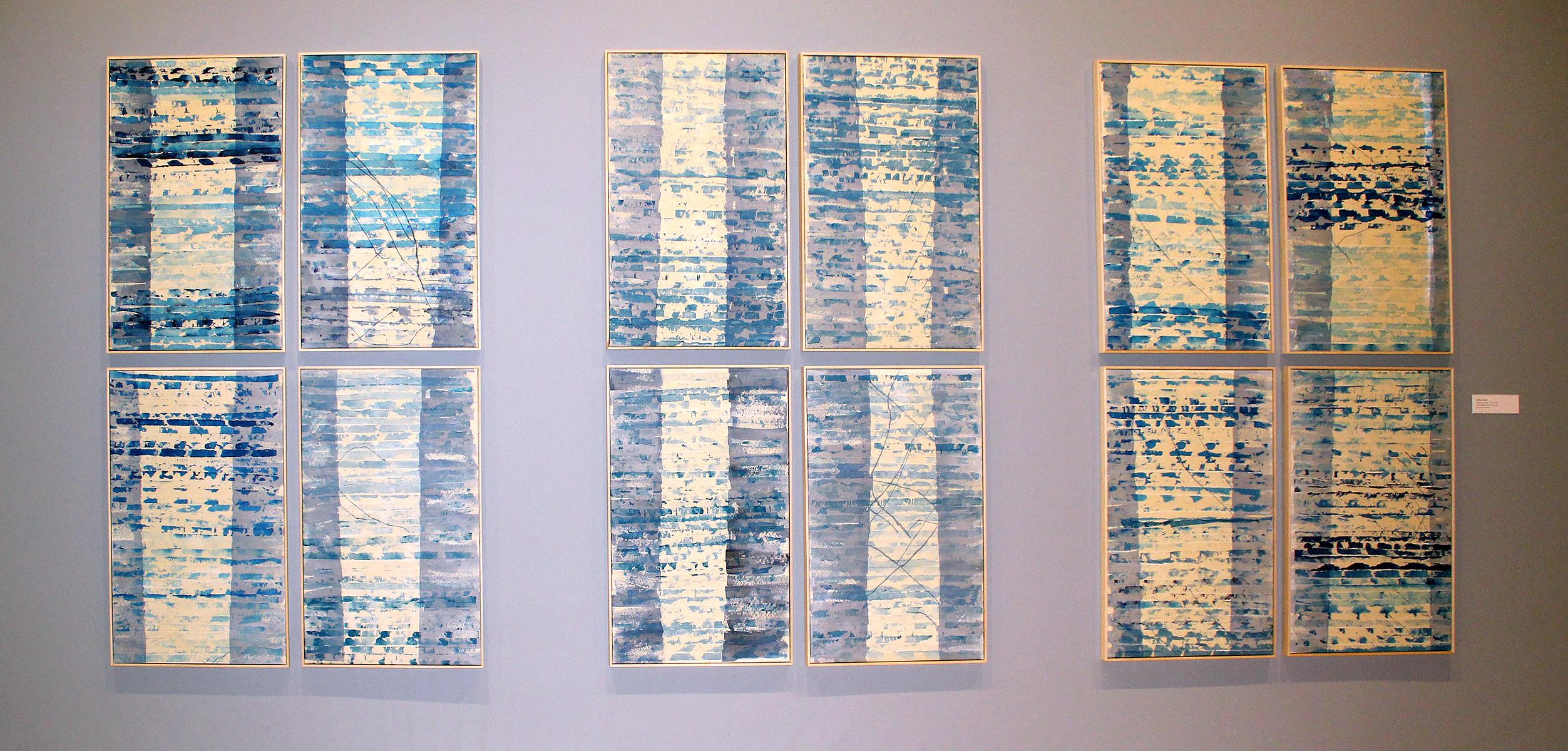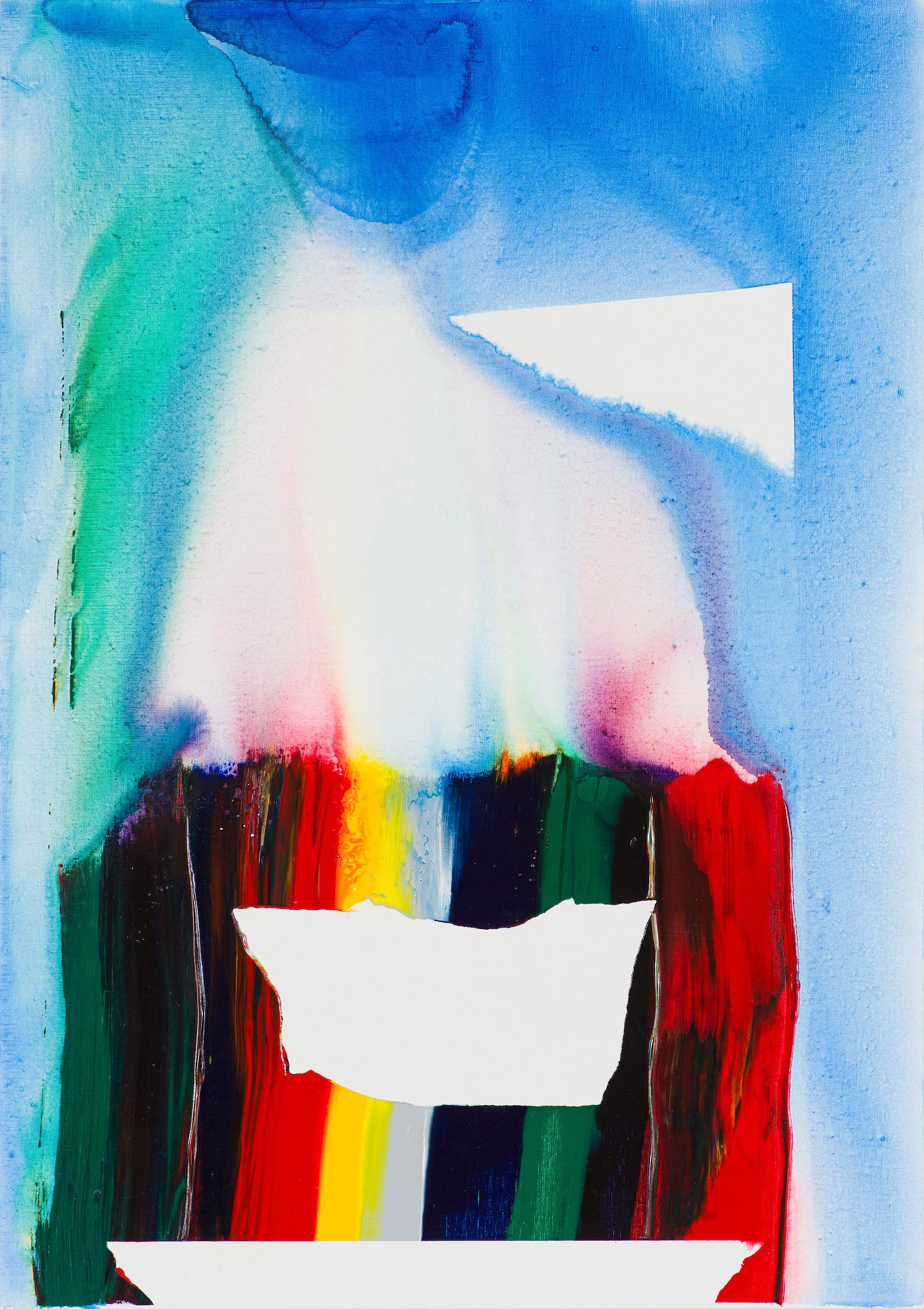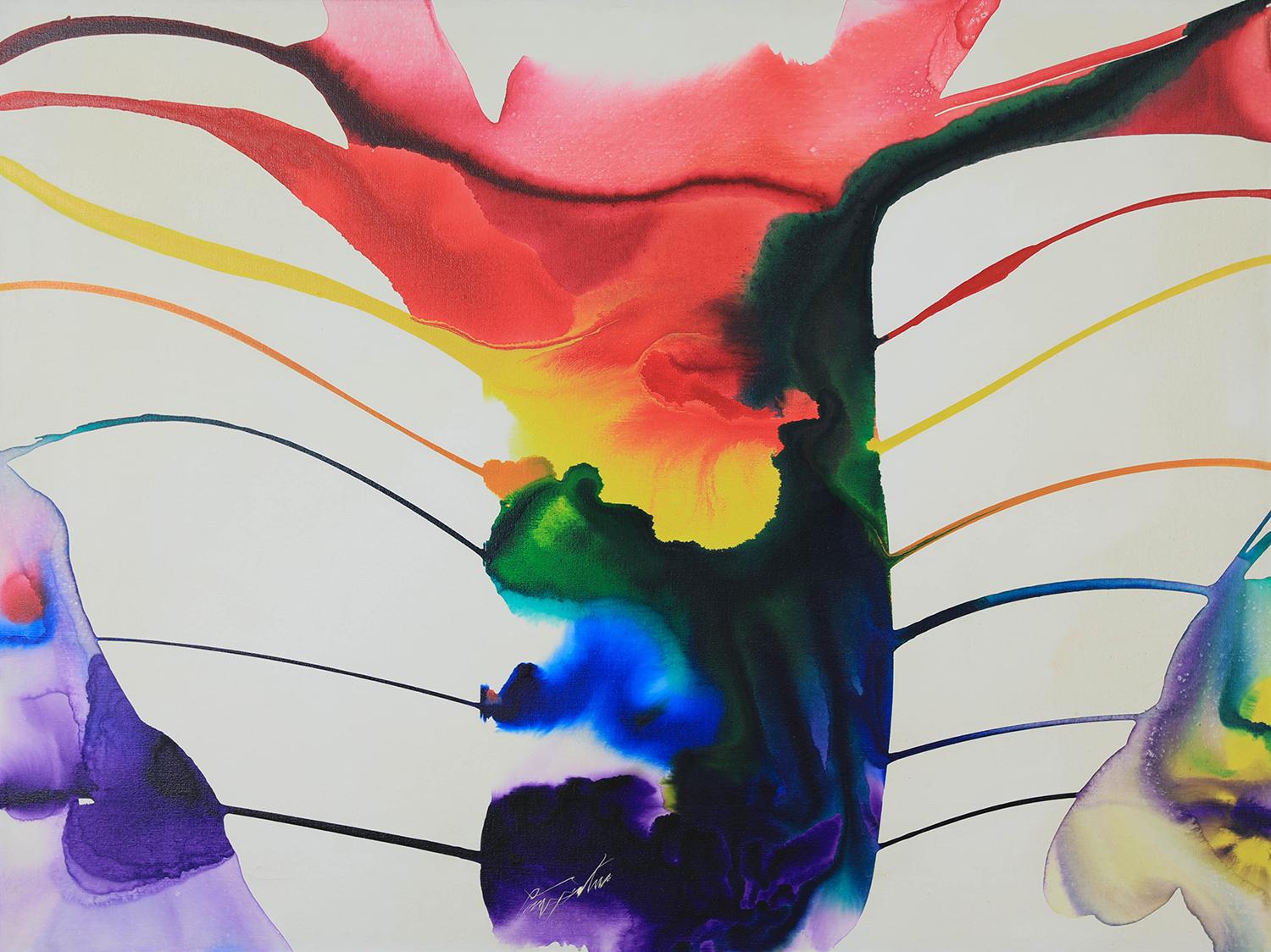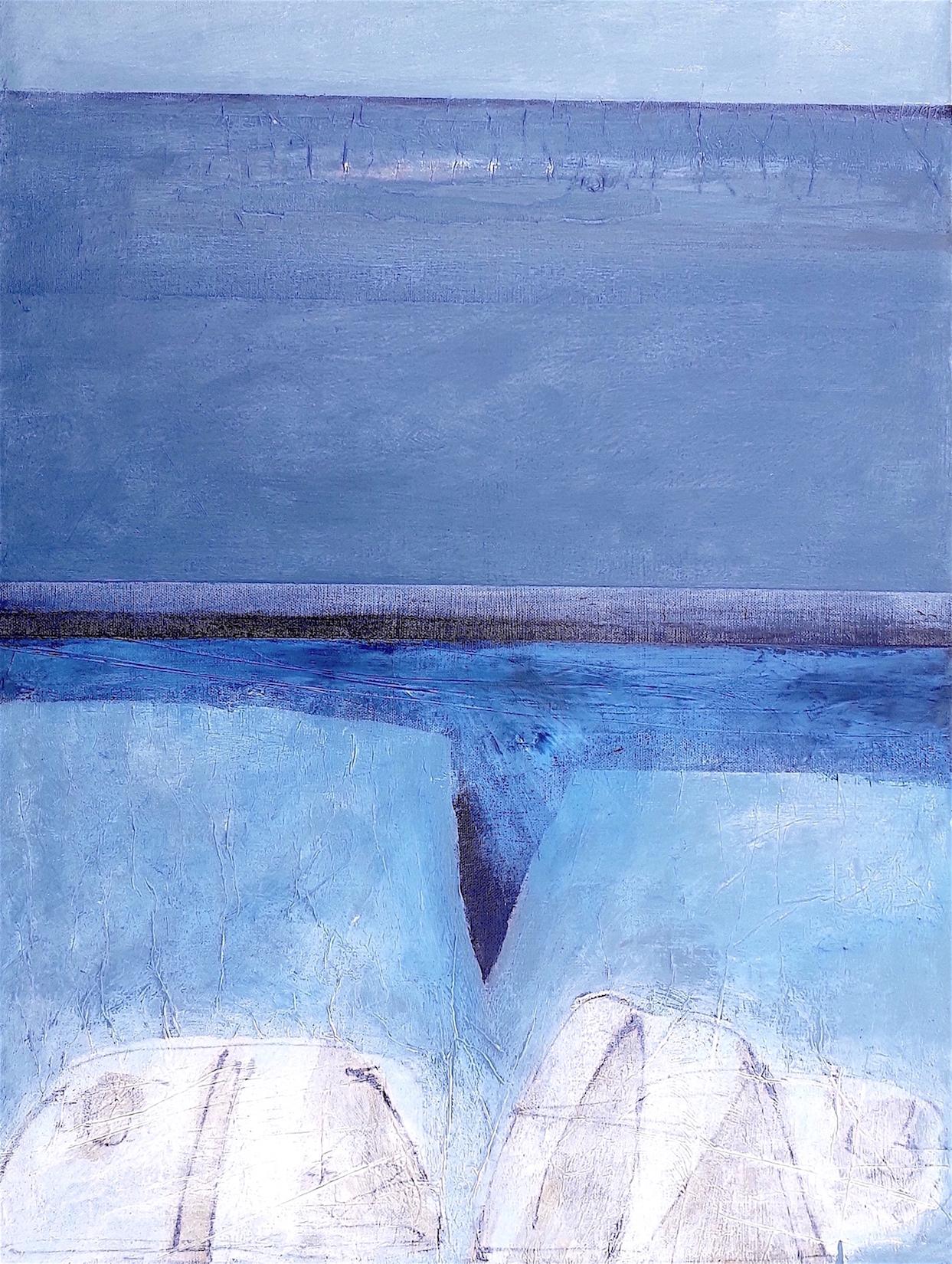Larry Zox"Lexington, " Larry Zox, Abstract Expressionism, Minimalism, Brown Modernism1973
1973
About the Item
- Creator:Larry Zox (1936-2006, American)
- Creation Year:1973
- Dimensions:Height: 62 in (157.48 cm)Width: 50 in (127 cm)
- Medium:
- Movement & Style:
- Period:
- Condition:
- Gallery Location:New York, NY
- Reference Number:1stDibs: LU1841210452772
Larry Zox
Larry Zox was one of the principal representatives of the generation of young painters following the era of the Abstract Expressionists. He is best known for his exuberant geometric abstractions. Many classified him as an Abstract artist, but he considered himself to be a Colorist, which made a strong contribution to the Color Field movement of the 1960s. Zox utilized geometric forms in a mechanistic format and fewer contrasting colors in a design that is based upon improvisation. His works conform to the modern idea that art must be done with fluidity, acceleration and rapidity of execution.
- ShippingRetrieving quote...Ships From: New York, NY
- Return PolicyA return for this item may be initiated within 3 days of delivery.
- "Night Road" Gerome Kamrowski, Abstract Expressionism Surrealism, Purple ImpastoBy Gerome KamrowskiLocated in New York, NYGerome Kamrowski (1914 - 2004) Night Road, 1966 Acrylic on canvas 58 1/4 x 96 1/4 inches Signed and dated Provenance: The Artist The Kamrowski Estate (by family descent in 2004) Exhibited: The Detroit Institute of Arts, Detroit, Michigan, 56th Exhibition for Michigan Artists, November 18 - December 31, 1966, no. 32, illustrated (Night Road was the winner of the "Phyllis King Weiner Memorial Prize" at this exhibition). Ann Arbor, University of Michigan Museum of Art, Gerome Kamrowski: A Retrospective Exhibition, August 30 - October 16, 1983, no. 70, illustrated. Tarpon Springs, Florida, Leepa-Rattner Museum of Art, St. Petersburg College, Gerome Kamrowski: An American Surrealist, September 8 - October 27, 2002, no. 23. Chelsea, Michigan, River Gallery, Gerome Kamrowski: 1914-2004, A Memorial Retrospective, October 30 - December 5, 2004. Gerome Kamrowski was born in Warren, Minnesota, on January 19, 1914. In 1932 he enrolled in the Saint Paul School of Art (now Minnesota Museum of American Art - MMAA), where he studied with Leroy Turner, and Cameron Booth. Both Turner and Booth had been students of Hans Hofmann, and were also associated with the Abstraction-Création group in Paris. It was from these peers that Kamrowski was introduced to a "kind of expressionist cubism." In 1933 Kamrowski was awarded a scholarship to the Art Students League, where he would study in New York under Hans Hofmann. Unfortunately, immigration problems had prevented Hofmann from assuming his post. Nevertheless, Kamrowski decided to remain in New York for a short time, to attend classes taught by George Grosz. After a few weeks, he returned to St. Paul, and found a position in the mural painting division of the Minnesota FAP/WPA (Works Progress Administration). In 1936 he contributed “Synthetic Cubist Style” frescoes in the Northrup Auditorium of the University of Minnesota. In 1937 Kamrowski went to Chicago to study under László Moholy-Nagy and Alexander Archipenko at the New Bauhaus (now Illinois Institute of Technology's Institute of Design). There he was exposed to new and interesting ideas regarding the role of nature in art and the "geometric basis of natural form". In 1938 Kamrowski received a Guggenheim fellowship to attend Hans Hofmann's summer school in Provincetown, Massachusetts. He then relocated to New York where he met William Baziotes. Together they shared a fascination in Surrealist automatic writing, and both artists explored its possibilities in their paintings. Kamrowski was particularly drawn to Surrealism's fundamental appeal of intuition over intellect. He was interested seeking a process that "binds all things together...a kind of cosmic rhythm". Throughout the late 1930s and early 1940s while living in New York, Kamrowski became an integral part of the emerging surrealists. In 1942, the artist Roberto Matta attempted to form a group of artists to investigate new applications for Surrealist methods. He invited Kamrowski, along with William Baziotes, Jackson Pollock, Peter Busa...Category
1960s Abstract Expressionist Abstract Paintings
MaterialsCanvas, Acrylic
- "Grey II" Sherron Francis, Female Abstract Expressionism, Color FieldBy Sherron FrancisLocated in New York, NYSherron Francis Grey II, 1975 Signed, titled and dated on the reverse Acrylic on canvas 80 x 69 1/2 inches Artists such as Helen Frankenthaler, Morris Louis, Dan Christensen, and Sa...Category
1970s Abstract Expressionist Abstract Paintings
MaterialsCanvas, Acrylic
- "Titled Out" Sherron Francis, Female Abstract Expressionism, Brown Color FieldBy Sherron FrancisLocated in New York, NYSherron Francis Titled Out, 1973 Signed, titled and dated on the reverse Acrylic on canvas 66 3/4 x 38 1/2 inches Artists such as Helen Frankenthaler, Morris Louis, Dan Christensen,...Category
1970s Abstract Expressionist Abstract Paintings
MaterialsAcrylic, Canvas
- "Untitled" Sherron Francis, Female Abstract Expressionism, Black Color FieldBy Sherron FrancisLocated in New York, NYSherron Francis Untitled, 1977 Signed and dated on the reverse Acrylic and mixed media on canvas 93 x 42 inches Artists such as Helen Frankenthaler, Morris Louis, Dan Christensen, a...Category
1970s Abstract Expressionist Abstract Paintings
MaterialsAcrylic, Canvas
- "Untitled" Sherron Francis, Female Abstract Expressionism, Black Color FieldBy Sherron FrancisLocated in New York, NYSherron Francis Untitled, 1973 Acrylic on canvas 70 x 48 inches Artists such as Helen Frankenthaler, Morris Louis, Dan Christensen, and Sam Francis are already well-known names. How...Category
1970s Abstract Expressionist Abstract Paintings
MaterialsCanvas, Acrylic
- "Untitled" Sherron Francis, Female Abstract Expressionism, Red Green Color FieldBy Sherron FrancisLocated in New York, NYSherron Francis Untitled, circa 1975 Acrylic on canvas 90 x 64 inches Artists such as Helen Frankenthaler, Morris Louis, Dan Christensen, and Sam Francis are already well-known name...Category
1970s Abstract Expressionist Abstract Paintings
MaterialsCanvas, Acrylic
- Working Man, Large Oil Painting by Thornton Willis 1981Located in Long Island City, NYArtist: Thornton Willis, American (1936 - ) Title: Working Man Year: 1981 Medium: Acrylic on Canvas, signed and titled verso Size: 84 x 94 in. (213.36 ...Category
1980s Abstract Expressionist Abstract Paintings
MaterialsCanvas, Acrylic
- A Set of 12 Contemporary Framed Abstract Paintings Blue White Museum CollectionBy Monica AngleLocated in Buffalo, NYA set of 12 original mixed media monotype and painting mixed media works by American contemporary artist Monica Angle. These pieces were inspired by the changing light throughout th...Category
2010s Abstract Expressionist Abstract Paintings
MaterialsCanvas, Paper, Acrylic, Watercolor
- Phenomena Prism Mirror by Paul Jenkins - Abstract paintingBy Paul JenkinsLocated in London, GB*UK BUYERS WILL PAY AN ADDITIONAL 5% IMPORT DUTY ON TOP OF THE ABOVE PRICE Phenomena Prism Mirror by Paul Jenkins (1923-2012) Acrylic on canvas 147.3 x 1...Category
1980s Abstract Expressionist Abstract Paintings
MaterialsCanvas, Acrylic
- Phenomena Spectrum Guardian by Paul Jenkins, Abstract Expressionist artistBy Paul JenkinsLocated in London, GBPhenomena Spectrum Guardian by Paul Jenkins (1923 - 2012) Acrylic on canvas 76 x 101.5 cm (29 ⁷/₈ x 40 inches) Signed lower middle Paul Jenkins Executed in 1970 Provenance: Gallerie Iris Wazzau, Davos, Switzerland Private collection, Cologne, Germany Artist biography: Born at Kansas City in Missouri (USA), the multi-media artist, poet and playwright Paul Jenkins studied at the Kansas City Art Institute and the Art Students League in New York City. After his discharge from military service at the end of February 1946, he briefly studied playwriting with dramatist George McCalmon at the Carnegie Institute of Technology in Pittsburgh. Thereafter, Jenkins spent four years studying with Japanese American artist Yasuo Kuniyoshi in New York City. His first solo exhibitions were held at Studio Paul Facchetti in Paris in 1954 and the Martha Graham Gallery in New York City in 1956. Over the past thirty years, numerous retrospectives have been curated across the globe and Jenkins’ work can found in national collections from Europe and the United States to Israel, Australia and Japan. The diversity of his work springs from Jenkins’ wealth of eclectic influences. Some of his earliest works included what he called "interior landscapes" influenced by ancient natural forms like the caves he visited in the Ozark Mountains in his native-Missouri. Frequent student visits to the Frick Collection in New York fostered a love of the great masters: Bellini, Holbein, Vermeer, Rembrandt, de la Tour, Turner and Goya. In compliment, lingering student visits to the renowned Eastern collection of the Nelson-Atkins Museum of Art in Kansas City evoked powerful sympathy for a monumental Chinese fresco...Category
1970s Abstract Expressionist Abstract Paintings
MaterialsCanvas, Acrylic
- Celtic Song. Contemporary Abstract Expressionist PaintingBy Patricia McParlinLocated in Brecon, PowysPatricia McParlin, is an award winning British artist who lives and works in Wales. She studied at The University of Wales and The West Wales School of the Arts. She has recently b...Category
2010s Abstract Expressionist Abstract Paintings
MaterialsCanvas, Oil, Acrylic
- Demit Omphroy - Conversation, Painting 2022Located in Greenwich, CT“Conversation” represents the defining moment that one has with themselves around the decision to stay or leave the relationship. It is the final internal conversation where one has ...Category
2010s Abstract Expressionist Abstract Paintings
MaterialsCanvas, Paint, Cotton Canvas, Acrylic





